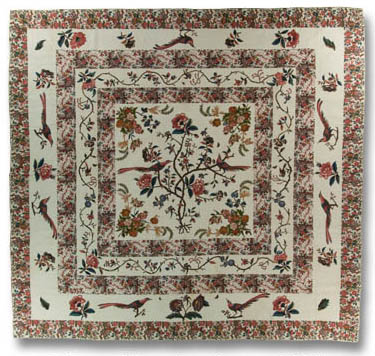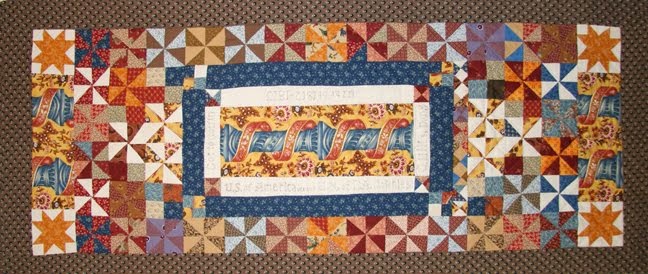The tree of life motif became fashionable when Indian cotton textiles such as "chintz" were imported to Europe in the 17th century. Very often the tree of life, or a stylized version of it, was a popular applique or "broderie perse" quilt design of quiltmakers from the late 1700's to the early 1800's. Broderie Perse is French for "Persian Embroidery" and is a style of applique using printed elements cut from fabric to create a design on a background fabric.
 |
International Quilt Study Center & Museum 2007.034.0001
Circa 1790-1810 |
 |
Winterthur Museum Item #1958.0108
Circa 1810-1813
|
 |
International Quilt Study Center & Museum Item #2008.040.0182
Circa 1790-1810
|
In addition to the stylized tree of life and fanciful birds the borders include the popular chintz fabics of the period.
This overall style was known as chinoiserie, from the French word 'chinois,' meaning Chinese as these popular images were inspired by art and design from China, Japan and other Asian countries.
Afton Warrick of Albuquerque, New Mexico submitted her version of the Tree of Life. Her quilt is among the 26 Best of Show quilts currently traveling with the Great Lakes Seaway Trail War of 1812 Quilt Show.
Afton writes: "My inspiration was a panel common to three chintz appliqué quilts dating from 1790-1813 (Winterthur Museum Object 1958.0108 made by Margaret Nichols and International Quilt Study Center & Museum Objects 2008.040.0182 and 2007.034.0001.)"
"Using modern methods, I recreated a style characteristic of this time period: a tree of life center medallion surrounded by pieced borders. The tree of life symbolizes healing, immortality and protection. It was a favorite design among American quilters from 1775 to the 1820s. During the early nineteenth century, American quilters used British-printed chintz fabrics to imitate Indian textiles imported to Europe in the 1500s."




















































